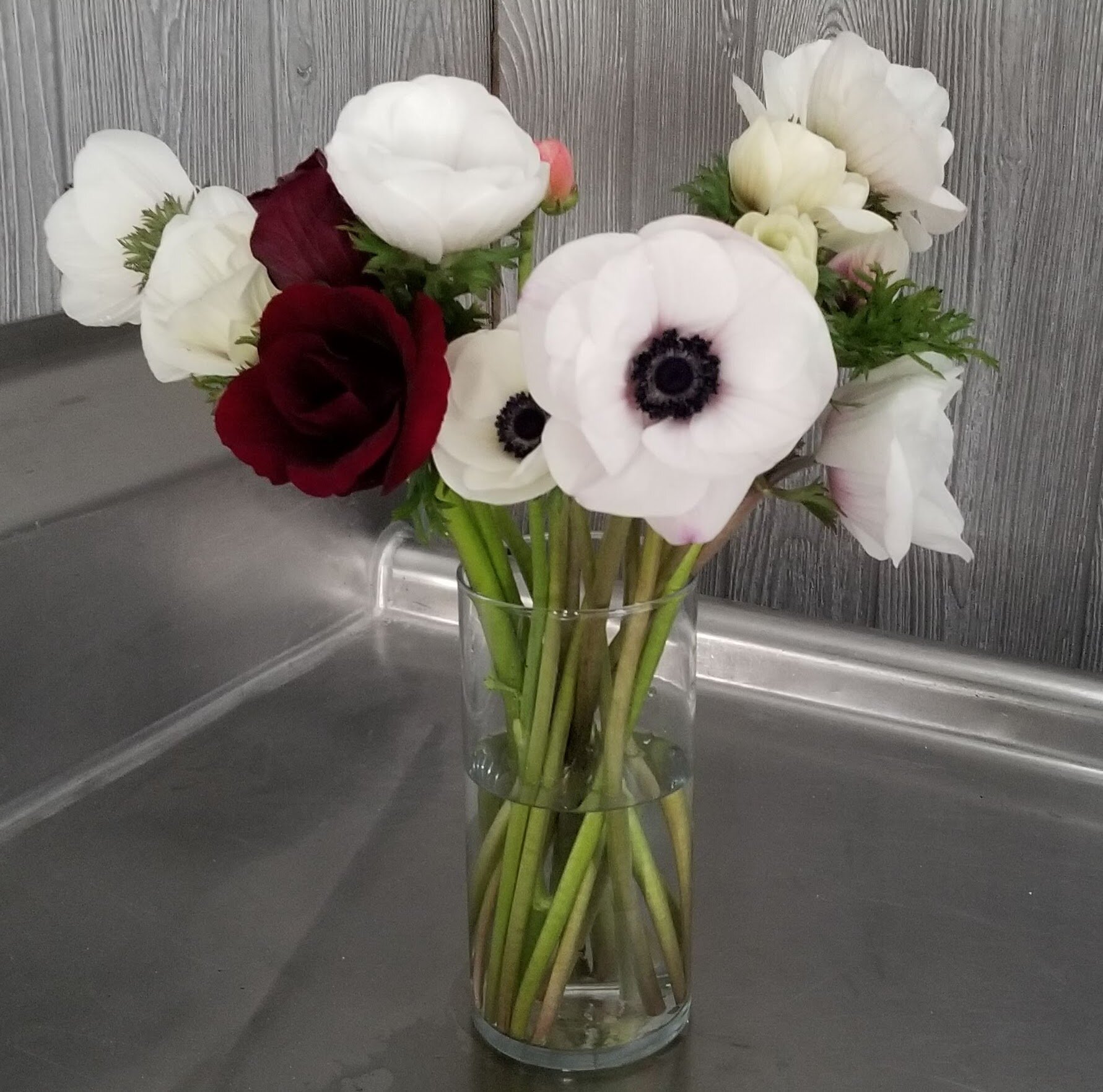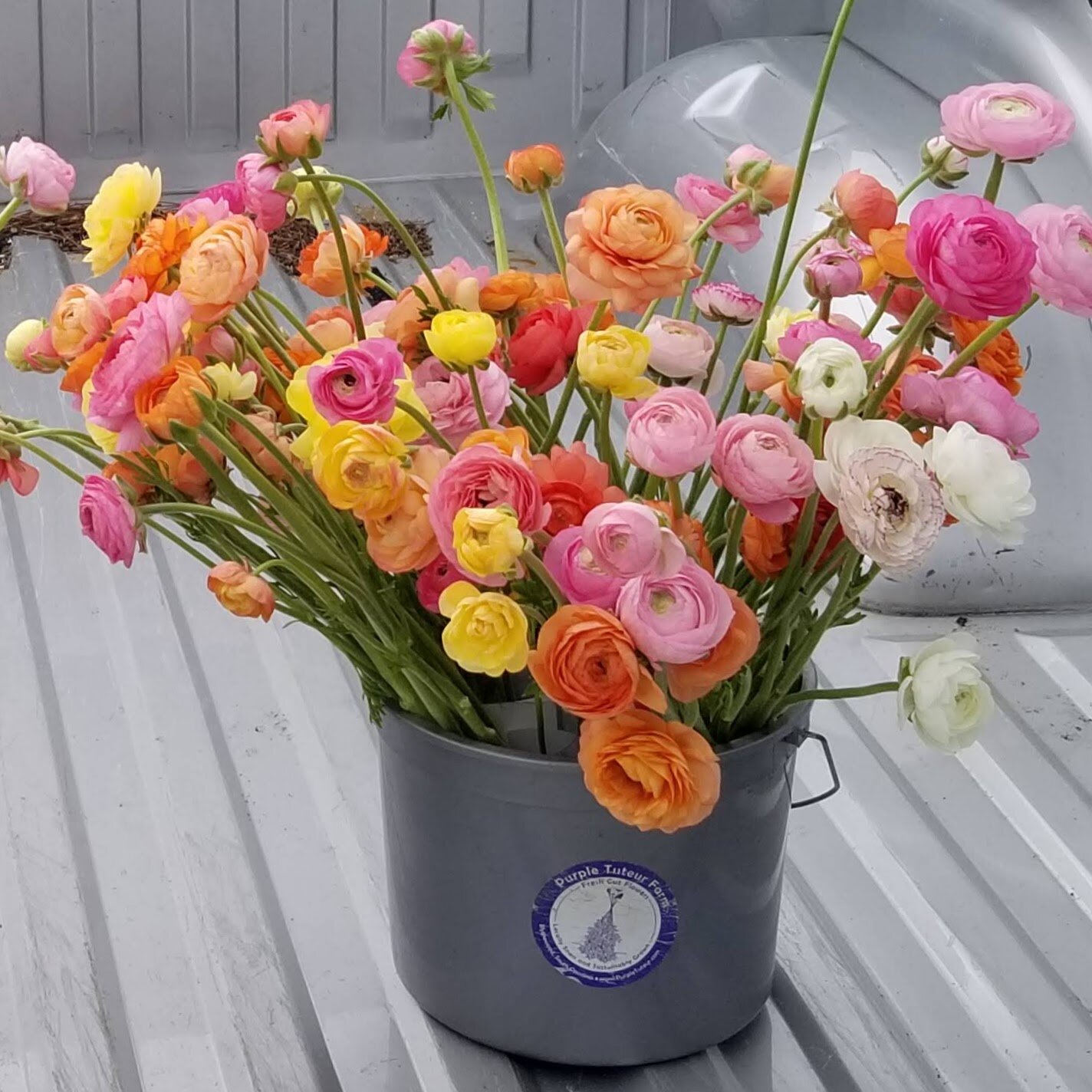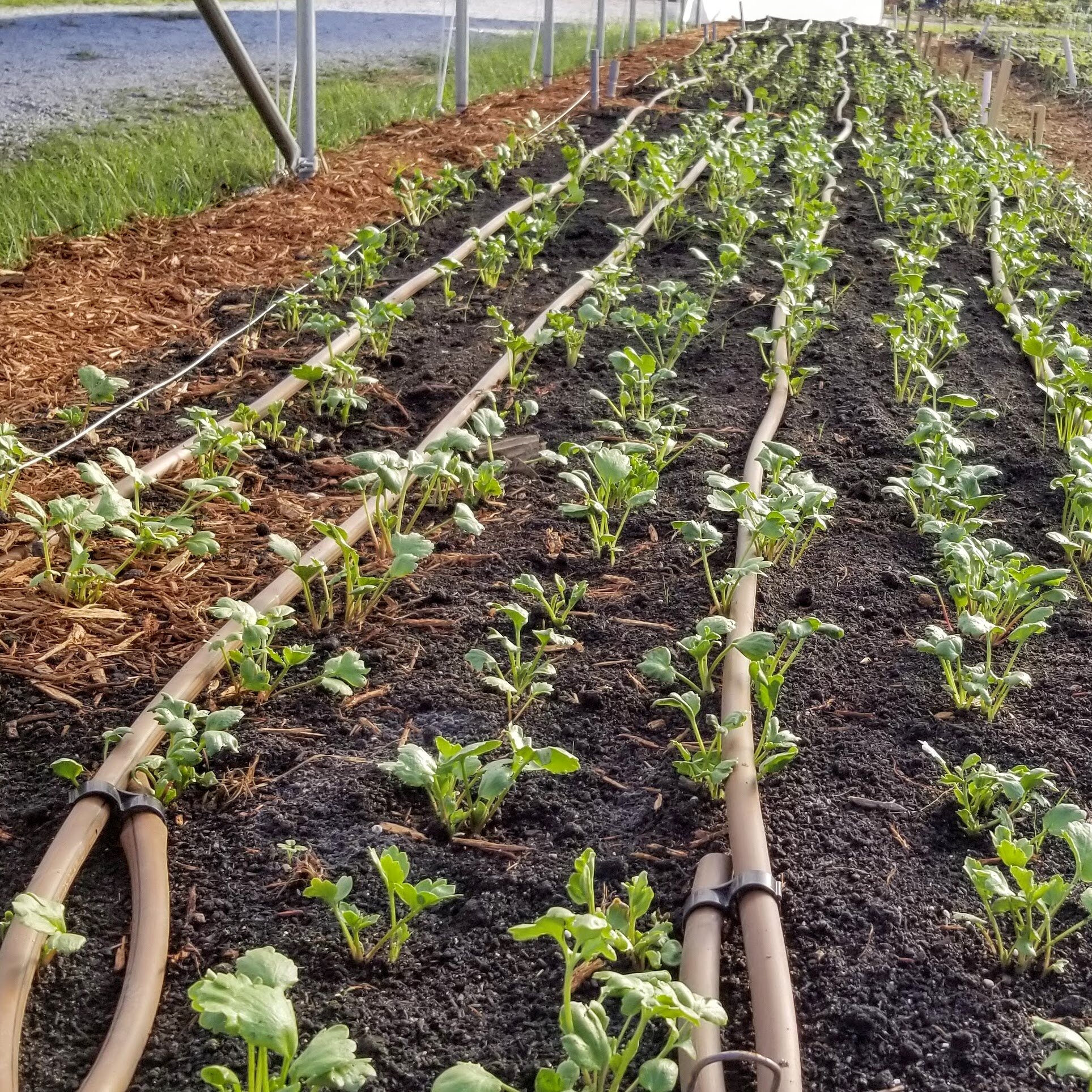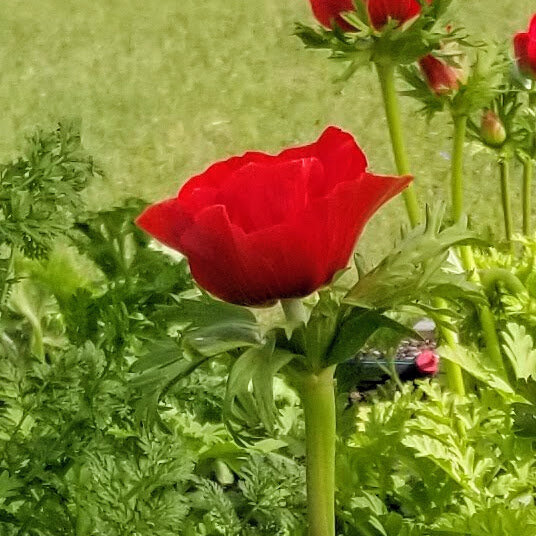Growing Anemone and Ranunculus in the Midlands
Anemone
Ranunculus
If you want to have cutting-garden blooms in late winter and early spring here in Columbia S.C., Anemone and Ranunculus are two great options. While they are very different flowers, they are often discussed together because their growing conditions are similar. They take a little special handling to get started but once you have them in the ground, very little care is required. They will send up multiple stems from each plant, giving you beautiful flowers to bring indoors when not much else is in bloom. Even better, they come back year after year!
Growing Conditions
Both Anemone and Ranunculus need full sun and good drainage. They can be grown in the ground or in pots. If you have clay soil, you may want to use a pot or a raised bed. Too much water will cause the corms to rot.
Both like day temperatures in the 60 – 70 F degree range, with nights from 45 – 55F. This means you can plant them in the fall or in January or February for early spring blooms. The soil temperatures around 55 F are optimal and once it gets warmer, they will go dormant.
Anemone will bloom about 90 days after planting. Ranunculus needs the 90 days and 8-12 hours of daylight. Both will begin to go dormant when daylength reaches 13 hours. They need to be protected from freezing weather. Cover them with heavy mulch if we get freezing weather.
Prep and Planting
Corms : Top - Anemone Bottom - Ranunculus
Both Anemone and Ranunculus need to be pre-soaked for 4 hours before planting. This wakes up the corms. They are alive but dormant when you get them, so they need oxygen during the soak or they will suffocate. Put them in a bowl in a sink filled with water and keep the faucet running slowly, letting the water overflow. This ensures that there is oxygen in the water while the corms are submerged. You can also submerge an aquarium stone into the water to add oxygen and eliminate the water overflow.
Once they have been soaked, you can pre-sprout them to ensure that the corm is viable or you can go ahead and plant them. It is easier just to plant them, but pre-sprouting ensures that you don’t plant a corm that is not viable.
To pre-sprout, put them in a flat of damp vermiculite and keep them at 40-50F for two to three weeks. If you soak them and then leave them at 60 or above, they will rot since they stay dormant. Try a refrigerator if you don’t have a cool enough space outdoors. White roots will emerge and need to be handled carefully when planting.
Plant the corms 6 inches apart with one inch of soil over the corm. Anemones should be planted with the point down. Some have odd shapes. If you are not sure which is the pointy end, plant them on their side. Ranunculus need their legs down in the soil. Make sure your soil drains well.
Care
Ranunculus in progress
Water them well when they are planted and then do not water again until leaves appear. After the green leaves are visible, feed them with a water-soluble fertilizer once a week until the blooms appear. Stop feeding when the blooming begins.
Cover the plants when weather gets below freezing. If the leaves freeze but the roots are OK, the plant will come back.
Harvesting Your Blooms
Anemone bloom ready to harvest
Anemone open during the day and close at night. They should open more than once before cutting. Cut at the base of the stem, being careful not to cut newly emerging stems. For the optimal cut, the collar should be about an inch from the base of the bloom.
Ranunculus bloom ready to harvest
Ranunculus petals open from a ball shaped bud. Let the blooms open about half way on the plant and cut the stem at the ground. You can also cut the stem when the bud is colored and soft when squeezed and it will open indoors. The second option is handy if rain or a late freeze is in the forecast and you don’t want to risk losing blooms to the weather.
When the days turn warm and daylight gets to 13 hours, ranunculus and anemone will go dormant. Let the greenery die back naturally, cleaning up the leaves after they are yellowed. Leave the corms in place and they will come back when the conditions are right the next year!
Ready to Give it a Try?
We will offer Anemone and Ranunculus corms on our website by October 20th. We are not shipping at this time, but will have farms pick up dates and we will offer delivery to our subscription zip codes. Watch for the announcement coming soon!






